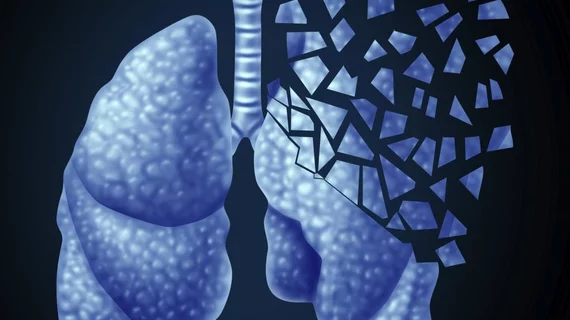RSNA 2018: Researchers use AI to predict cancer survival, treatment response
After using deep learning on patient scans to track cancer evolution, one research team is hopeful the “promising results” can help improve treatment response and survival predictions for cancer patients.
Yiwen Xu, PhD, a medical resident with Harvard Medical School, presented the research abstract on Nov. 26 during the annual RSNA meeting in Chicago earlier this week.
The study’s goal was to evaluate clinical predictions by deep-learning network models from time-series images in non-small cell lung cancer (NSCLC) patients. The time-series of images came from patients who had follow-up scans one, three and six months following treatment. The deep-learning model also took into account missed checkups.
“Lung cancer is one of the leading causes of death worldwide, and the tumors are evolving biological systems. So, we need to be able to capture the changes in these lesions over time and potentially use these methods to provide clinical prediction method,” Xu said.
For the study, researchers used a cohort of 268 stage three NSCLC patients. The first dataset included 179 patients who were treated with definitive chemoradiotherapy (chemoRT) and 581 of their free-breathing CT scans. The patients were split into training (107 patients) and tuning (72 patients) groups. The deep-learning model was used to predict overall survival, metastasis, progression and locoregional recurrence (LRR) free status for this dataset.
The second dataset, which was used as the test, included 89 patients treated with chemoRT and surgery and 178 of their free-breathing CT scans. The deep-learning model was used to predict overall survival, metastasis, progression, LRR free status and pathological response for this dataset.
When there was no follow-up scan for cancer patients, the model achieved an area under the receiver operating characteristic curve (AUC) of just 0.606 and 0.583 when predicting one- and two-year survival. When there was one follow-up scan, the model achieved AUCs of 0.676 and 0.644 when predicting one- and two-year survival.
With two follow-ups, the model achieved AUCs of 0.763 and 0.687 for when predicting one- and two-year survival. With three follow-ups, the model achieved AUCs 0.817 and 0.736 when predicting one- and two-year survival.
“After three follow-ups, you have an AUC for first-year overall survival of 0.82 and a two-year overall survival of 0.74,” Xu said. “With the addition of each follow-up, there is an improvement in performance.”
Researchers believe the results may have potential clinical implications on adaptive and personalized therapy.
“This study demonstrates promising results using deep learning to combine patient scans at multiple time points to improve clinical survival and response predictions,” Xu’s presentation concluded.

